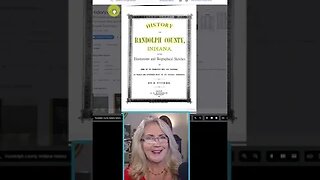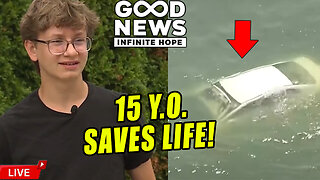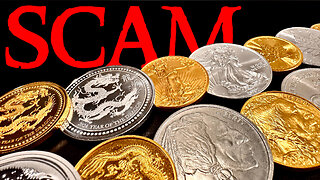Episode 165: A Blast from the Past
The Genealogy Gems Podcast
Episode 13 with Lisa Louise Cooke
Download the FREE App
www.Genealogygems.com
Originally Published 2007Remastered March 2014 By Lisa Louise Cooke
From the MAILBOX
Hello Lisa: I have just finished listening to your podcast on tracing family members through school records. You mentioned some sources to research. Alan's Website Many years ago I came across a list or resources to be found in the home. I still have the photocopy I made, but it does not say who originally created it. I believe I found it at my local LDS. Anyway since putting it on my site, I and others who have come to that page have added to it. I really like your show and look forward to receiving your newsletter.
Allan Scahill
GEM: Memorial Day WW II Service Records
With the month of May comes Memorial Day, and in Episode Thirteen I thought it would be a good time to do a quick check for some military records. If you have relatives who served in World War II here are a couple of free must check websites for you.
The National Archives and Records Administration (NARA): www.archives.gov/aad
The WWII enlistment records for the years of 1938 through 1946 are listed on the NARA website. These records contain the majority of enlistments, approximately nine million men and women who enlisted in the U.S. Army, including the Women's Army Auxiliary Corps. What I like about the NARA records is that they include the Army Serial Number, which I've not seen on the Ancestry version of the records. And of course they are free at the NARA website. They also have searchable WWII Prisoner of War Records.
Another great website for searching for soldiers traveling overseas or returning home after the war is Steve Morse's All New York Arrivals Search Form.
I hadn't thought of searching for traveling soldiers until I heard Steve Morse speak about it at a recent seminar. As soon as I got home from the seminar, I used his form and immediately found my Great Uncle Elzie returning home on the Ile de France after being injured in the D-Day invasion. With the availability of New York passenger lists up to 1957, many new research doors have been opened.
If you'd like more information or historical background on Memorial Day, visit the U.S. Memorial Day website.
GEM: Family History Books
By now you may have seen my videos A Nurse In Training Part 1 Part 2 on my YouTube channel.
A Nurse In Training didn't actually start out as a video but rather a book. I have found that by breaking up my research into digestible chunks of time and self-publishing them in hard cover books my extended family is able to understand and enjoy our family's history.
I started self-publishing about a year ago. We don't live close to our families, so Christmas gifts have to be purchased ahead of time and shipped. Family history books turned out to be a fantastic way to start sharing some of my research findings in an affordable way that could be easily mailed.
In the past I've sent CDs full of photos and documents. But in the end I think they were a bit overwhelming to the non-genealogists in the family.
I think there are many reasons for this:
Computer CDs are perceived as something technical and hard to use. The material is chopped up, and individual photos and documents don't tell a particular story smoothly and easily.
I think they're also perceived as very time consuming. Folks just don't feel like they have the time to sit down and really give it the attention it deserves. Also, many people find reading on a computer screen hard on the eyes.
The solution: a good old fashioned book! Books are still hard to beat for telling a story in words and pictures in a user friendly way.
But where to begin the story, and where to end it? That's the big question! The temptation is to tell the story of one generation of the family. That's usually just too big of a project to take on. The book will likely end up being lots of dates and names and not a lot of room for much else. And there's always the risk that it won't be completed if it's too large an undertaking.
I wanted my family to get to know these people in our family tree intimately. That meant focusing in much closer than an entire generation of the family. In the end, I started with my favorite ancestor: my grandmother.
I've transcribed many years of her diaries as I talked about in Episode Two. One of the stories that really emerged out of them was her years spent in nurses training in the 1930s. I learned so much through her journal entries, and I knew I had a good collection of photos from that...
-
 1:01
1:01
Genealogy Gems - Your Family History Channel
1 year agoBest New Google Books Feature Convert Books to Text #shorts
1421 -
 1:04:15
1:04:15
Hometalk
1 day agoForget dryer sheets and do THIS instead!
25.4K2 -
 6:25:36
6:25:36
MissesMaam
6 hours agoCozy Games + Coffee 💚✨
20.7K2 -
 1:39:39
1:39:39
Nina Infinity
19 hours agoGOOD NEWS - Infinite Hope # 197
19.8K4 -
 10:33
10:33
Silver Dragons
3 hours agoThis Massive Gold & Silver Scam is WORSE Than Reported
19.4K7 -
 1:01:55
1:01:55
Russell Brand
6 hours agoMusk SILENCED Them With THIS Point | Fidias Panayiotou EXCLUSIVE on CORRUPTION OF EUROPE - SF 427
147K177 -
 2:27:51
2:27:51
David Foster
18 hours agoGOODBYE LIVE STREAM
39.7K7 -
 1:05:20
1:05:20
The New American
3 hours agoNew American Daily | Kamala, Trump agree to debate as Walz “stolen valor” controversy swirls
20.4K2 -
 1:43:37
1:43:37
Winston Marshall
5 hours ago“Hugely Problematic” The Truth About Multiculturalism | The Winston Marshall Show #023
45.8K37 -
 1:57:51
1:57:51
The Charlie Kirk Show
4 hours agoKamala's Kredentials + Musk's Big Win For Speech | Blair, Bokhari | 8.9.24
95K62